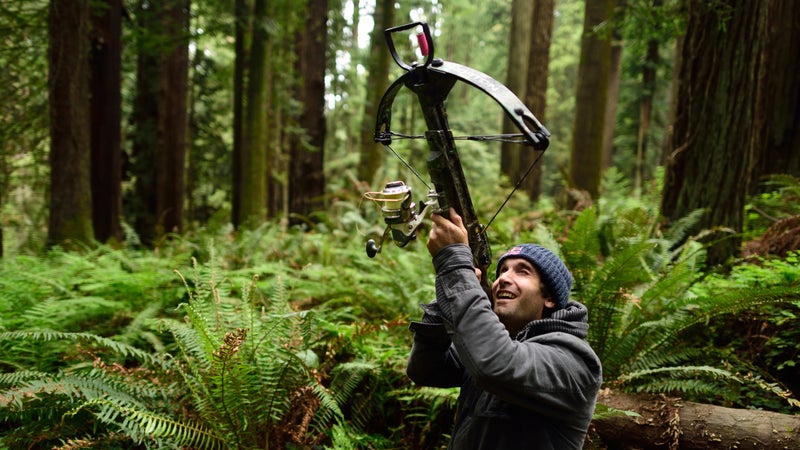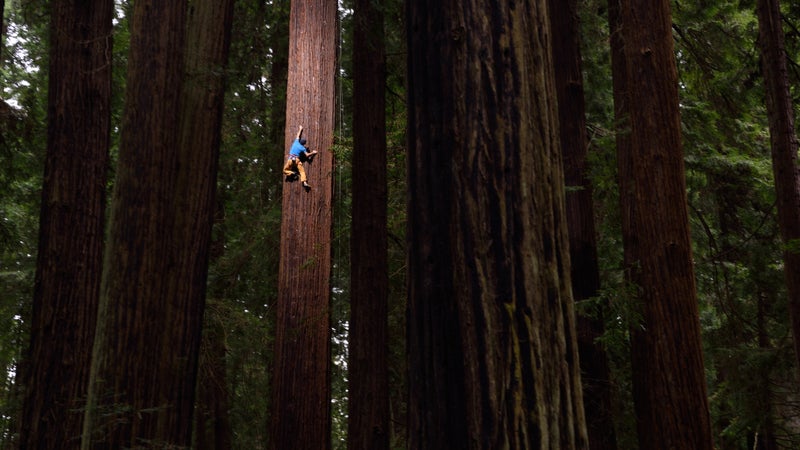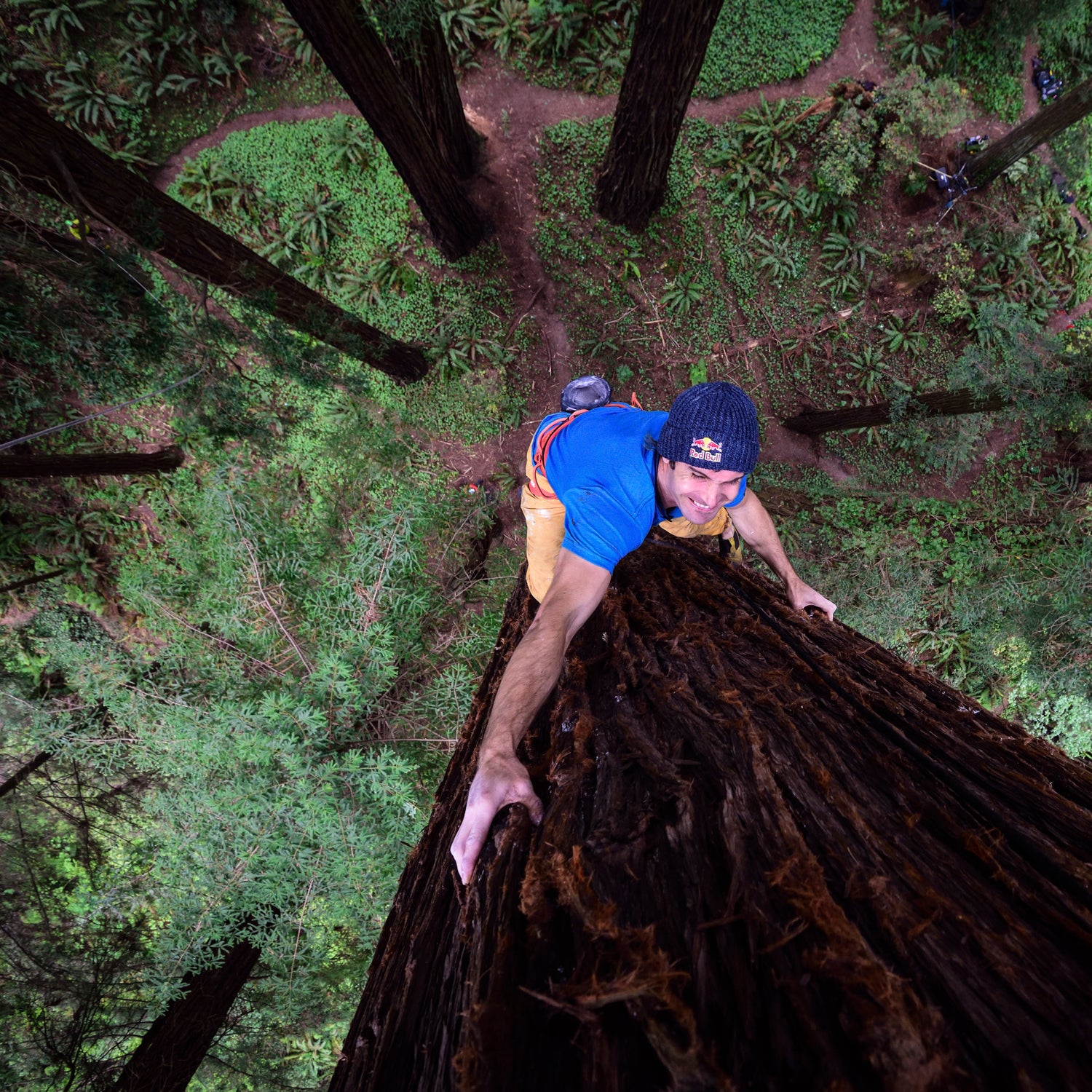We've all climbed trees, but most of us have probably never climbed a tree like professional climber Chris Sharma just did while on a visit to his home state of California. The 34-year-old free-climbed a 253-foot, 700-year-old redwood in Eureka, stopping along the way to pull samples used to measure the water status of the tree. The project, which Sharma undertook with two UC Berkeley tree biologists, was designed to gauge the health of these trees amid California's historically intense drought. (This particular tree was doing fine.)

Sharma is best known for setting a number of 5.15 routes around the world, and for his first ascent of a 5.14c route in the Virgin River Gorge when he was only 15 years old. And while he doesn’t have any ambitions to add tree climbing to his permanent repertoire, he is uniquely happy with the result of the project, which he says was a long time coming. “I grew up climbing trees before I found rocks,” Sharma told ���ϳԹ��� on a phone call this week from Spain. “Now every time I go home I try to find new routes or ways of exploring familiar places. This seemed like a really great way to pay homage to these beautiful trees and reconnect with something I’d done as a kid in a new way.”
Sharma is incredibly precise and focused on the aesthetics of a climb, and has always been good at deconstructing the nuances of a soon-to-be route, but climbing a tree without the aid of branches was a different story. “These are living beings,” Sharma says in a video of the climb released Tuesday (below). Scaling the redwood was “proper hard climbing” and “way more difficult than I expected,” he says. We wanted to know what he learned from the experience. In his words:

- Trees with sturdy bark work better. I wanted to be sure my holds were going to stay connected to the trunk and be reliable throughout the entire climb. A lot of bark is crumbly or unstable, but the tree we found was fire hardened and strong. Still, I spent a lot of time figuring out the best route, and I didn’t redpoint it (meaning practicing the route prior to the climb).
- Top rope like an arborist. Rather than lead-climb and place pieces of gear on the tree trunk along the route, I fired a nylon string from a crossbow from the ground to a spot high in the tree and pulled a rope through. Arborists typically haul themselves up the rope using a jumar, but I climbed the trunk instead (while on belay). It’s better for the tree than using protection and more pure as well, which was important to me. I wanted to be able to protect the climb naturally.
- Practice your crimps. Every hold on this climb was a crimp. Just one crimp after the other with practically no footholds for balance. I picked a tree with very few branches towards the bottom because I wanted to climb it the way I would a rock face. But I definitely appreciated the odd broken branch or natural seam, especially towards the top.
- Memorize your route. It’s was almost impossible to remember the hand and footholds I figured out because everything looks the same. It’s so foreign, looking at bark when you’re used to looking at rock. I marked chalk dots as guides, I didn’t want to use chalk but I had to. Unfortunately with the humidity they kept disappearing.


